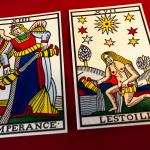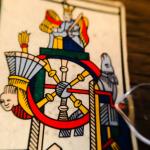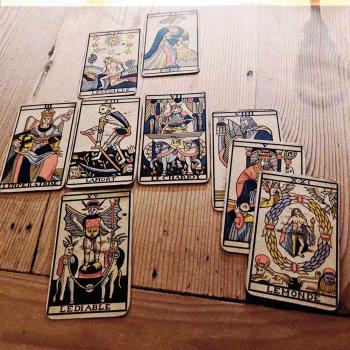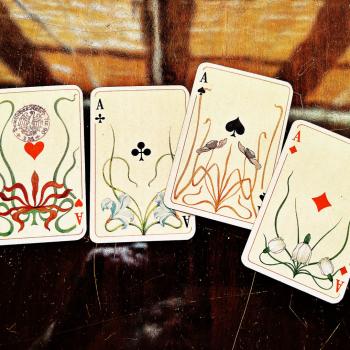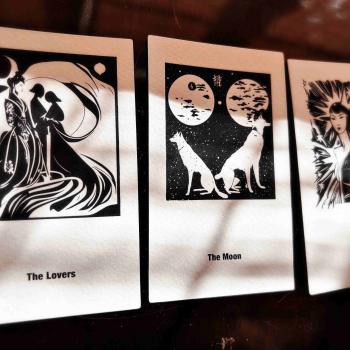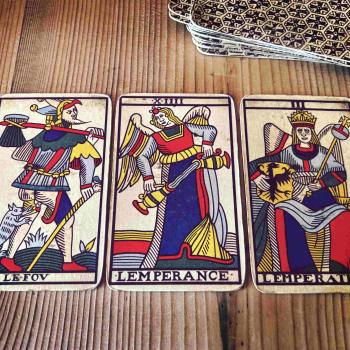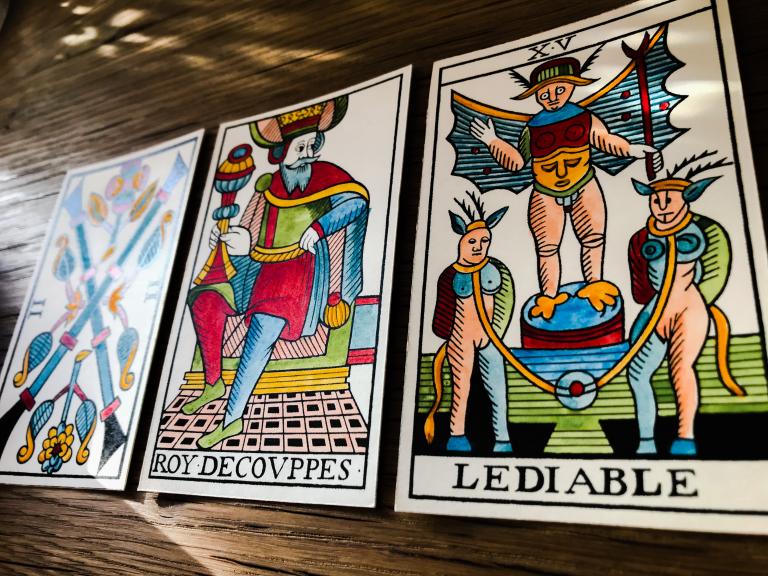
I often think about what it means to read cards. What are the motions that we go through, apart from the ones we learn from standard books or other masters?
Here’s what I propose:
When you read cards, you go through sets of three actions. Some of this process is conscious to you, some other parts of it is not.
Take this set:
- You shuffle the cards as a matter of ritual and standard procedure.
- You listen kindly to the question asked, without judgment.
- You pass judgment after the cards hit the table.
As you can see, this set involves a mixture of conscious acts with the unconscious.
Shuffling the cards can represent your vanguard moment, when you hold back your own energy in order to observe what happens on the other side of the table. This part can be both calculated and not.
While shuffling, you observe what informs the querents’ standpoints and motivations. How involved are they in whatever they put on your table? In most cases people are very involved in the issues that trouble them.
Knowing how intensely people experience their own problems helps you with the next set of considerations, aimed at strategic action:
- You want to calm people’s minds and suggest self-control.
- You want to be adamant about the fact that acceptance of the inevitable is a higher art than false self-empowerment.
- You want to invite the other to a more intimate exploration of life and death. ‘Keep going’ is only possible if you understand the smell of a corpse.
This brings us to yet another set of three, where we consider the following axioms:
- Intuition and action spring from the same source and share the same momentum.
- When intuition equals clarity, your offering of truth equals flow, that is to say, your own justice has the capacity to re-create lost connections – the presupposition here is that when people come to you for clarity they do so because they feel disconnected and not in flow.
- Your cards read the invisible acts, that is to say, while you read the cards to identify how you go from A to B, the cards themselves give you a hint of the space between A and B. What’s happening there, in the space that’s not articulated by any cognitive or emotional field?
Burn her
Imagine this scenario, and how you would respond to this question from a person who has problems at work with an envious colleague:
‘How can I burn her?’
You can test yourself:
If your first impulse is to put the cards on the table and deliver a message such as it is, then we can say that your intuition and action spring from the same source, namely, reading the cards for another without judgment and beyond attachment.
If your impulse is to ask follow-up questions, exhibiting bewilderment too, then we can say that your own motivation is not clear, thus displaying hesitance that reveals a contaminated mind.
If you went ‘what do you mean by burning her’?, you would be taking a moral stance already. You would be tempted to correct the person’s ways and say, ‘you simply cannot do that’. You may even dismiss the person altogether on the grounds that now you’ve seen enough. You may tell yourself some version of a story about what’s ethical and what’s not, thus legitimizing your non-reading.
In light of what the aim in cartomancy is, here’s a question for you: How useful is your hesitance and judgmental position?
The aim in cartomancy is to make clear cuts.
If you thought about this, you’d realize that even though you may have a different position on what the aim in cartomancy is, such as helping others with their problems, helping people realize that they’re asking the wrong question, make correct predictions, consult on strategies of love and war, empower and enchant, essentially what you want is to make a clear cut, to deliver a sharp answer whose precision is so transparent that even the most opaque of minds can see.
The question: ‘How can I burn her?’, was answered by these three cards:
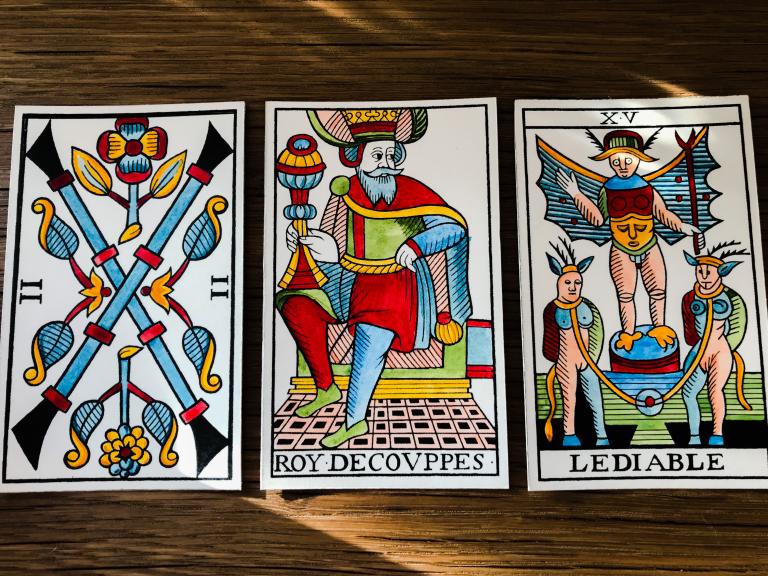
Two Batons, King of Cups, Devil
‘You can burn her if you pour a cup of love over her envy. Her own envy will be the tinctured gauze you use to bind and dress her wounds.’
A more standard answer to this question would be to say this:
‘Collaborate with her. Love her, and attempt to make her understand her own hatred.’
But would this answer be a representative of what we see in the cards with utmost clarity, or would this be an answer that merely reflects wishful thinking, or excitement through the association of all things Devil with passion, including the passion to re-direct envy?
The problem with the Devil is that it places whoever is under the Devil’s control in a situation beyond understanding. Attempting to make whoever is in the Devil’s grip understand anything is bound to fail, so how useful is this answer then?
Look at the cards, and understand yourself what is at stake when thinking ‘function over symbol’, timing and momentum, rulership and connectivity.
In my cartomancy classes I teach you to read like the Devil, which is to say that I teach you to see what you see, not what you think you see or want to see.
The Marseille Tarot Foundation Course is open for registration until tomorrow.

